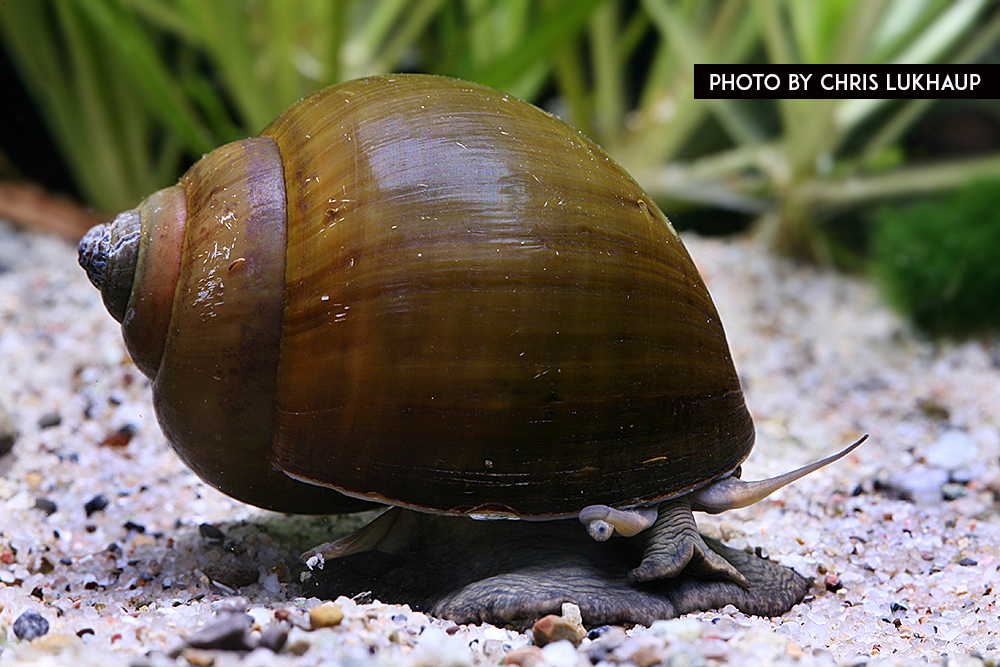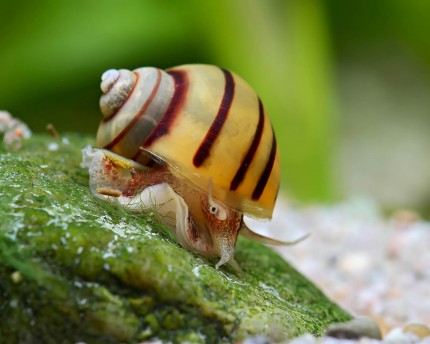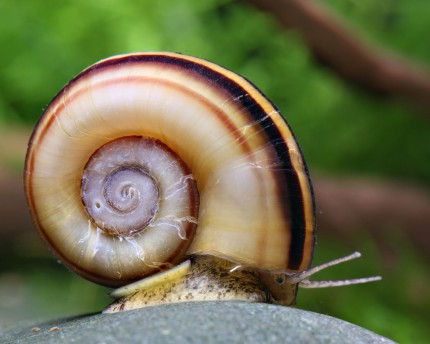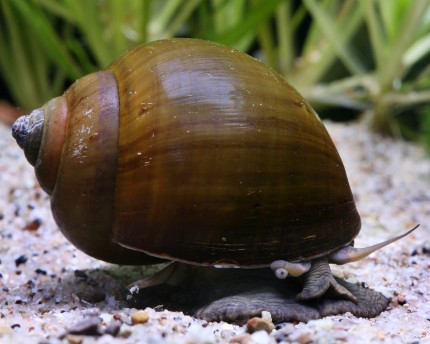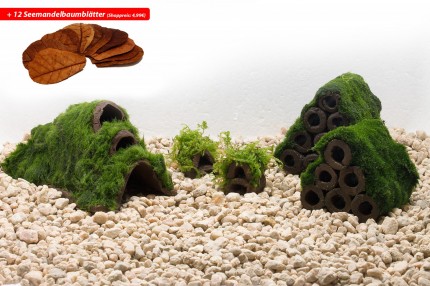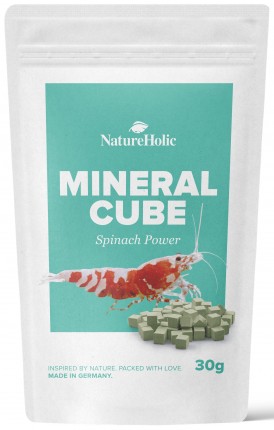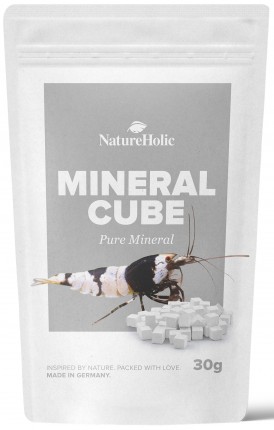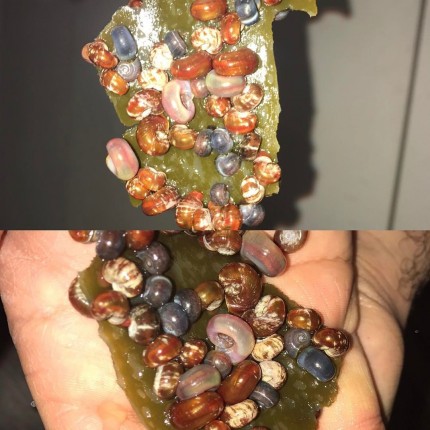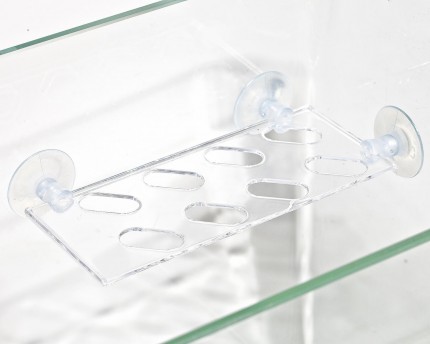Apple snails in aquarium
A particularly beautiful, large and conspicuous family among freshwater snails is the family of Ampullariidae, in German apple snails. In aquaristics apple snails were (and still are) very popular.
Where do apple snails come from?
The Ampullariidae originate mainly from the tropics. Thereby the genera Asolene, Felipponea, Marisa and Pomacea are found on the South American continent, they are also partly found in Central America and in the south of the USA. Afropomus, Lanistes and Saulea are native to Africa, while the genus Pila is found not only in Africa but also in Asia. However, apple snails have been carried to many parts of the world, where some of them have become a real nuisance and a problem for flora and fauna.
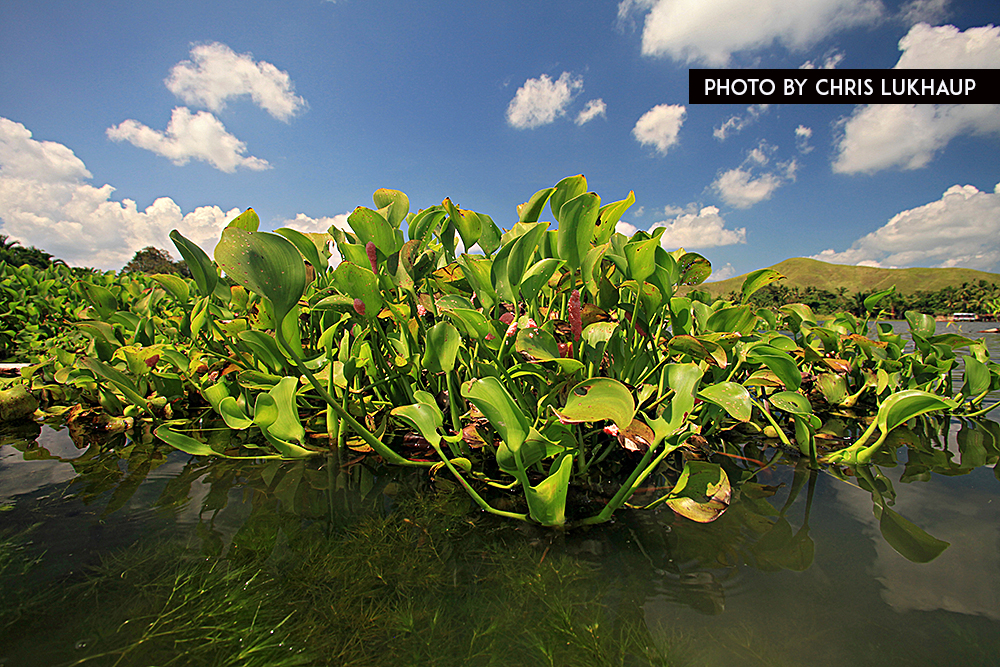
Apple snail biotope in Indonesia (Lake Irian Jaya). Note the apple snail clutches above water on the floating plants.
Apple snails ban! What happened?
Unfortunately, apple snails of the species Pomacea insularum were also introduced in Spain, among others in the Ebro Delta, where they cause devastating damage to rice fields due to the lack of natural enemies. For this reason, as a precautionary measure, the "Commission Implementing Decision of 8 November 2012 concerning measures to prevent the introduction into and the spread within the EU of the genus Pomacea (Perry)" banned trade in and importation into the EU of all species in the genus Pomacea since 1 January 2013. This decision also affected the apple snails of the species Pomacea diffusa, which are extremely popular in aquaristics and do not go to plants at all, because their radula (the rasping tongue) is too soft and cannot crush healthy plant tissue at all. However, since the species are difficult to distinguish, unfortunately the spell also hit these beautiful snails. Contrary to what some sources indicate, however, only the transfer of the animals is affected. Keeping and even breeding them is still allowed - just not bringing them into circulation. Even if you hear it from time to time: The distribution of Pomacea diffusa is still not allowed, the decision has not been changed - although many hobby keepers and fans of the beautiful colorful apple snails hope very much for it.
The temperature-sensitive apple snails do not survive the winter in our latitudes, but the decision should exclude that they are carried away to regions where they can actually survive. Since there are many species in the genus Pomacea that are true lawnmowers, the meaningfulness of this measure cannot be dismissed.
If you would like to read the wording of the decision again, you can find it here.
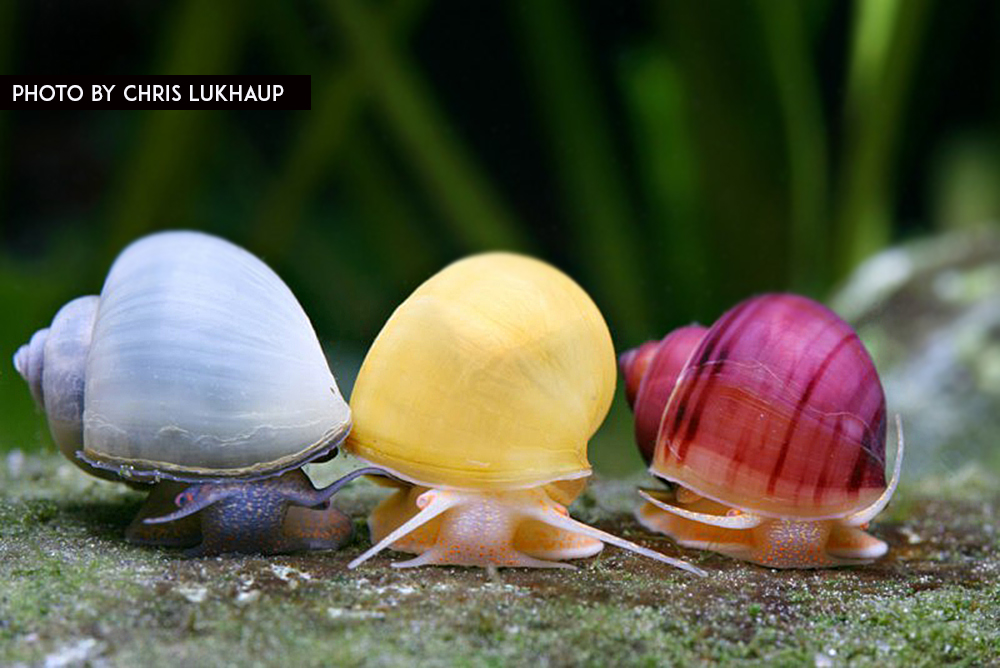
Not all apple snails are banned
All apple snails (Ampullaridae) that do not belong to the genus Pomacea may still be freely traded in the EU - regardless of whether they have a strong appetite for plants or not. So not all apple snails are affected by this ban!
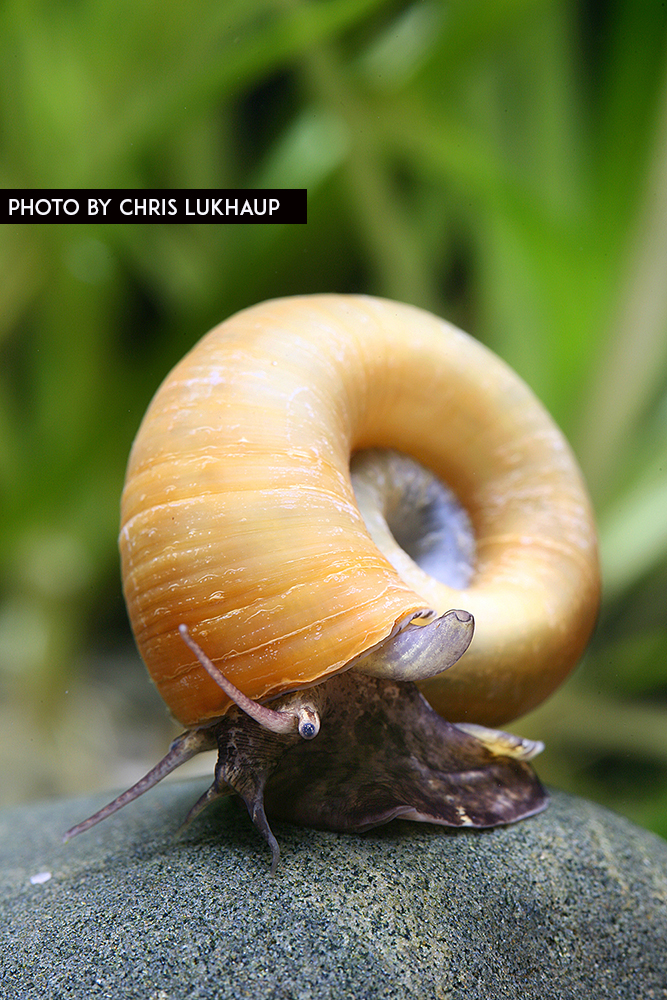
The Golden Paradise Sn ail is not affected by the ban!
Nutrition of apple snails
Although apple snails eat mainly plant food, they are not pure herbivores, but also need meaty food. Even live food is taken - for this the apple snail sits on the water surface, forms a funnel with its body and then helps itself to insect larvae hanging on the surface, such as black mosquito larvae. The clutches of other snails, the snails themselves, carrion and biofilms are also welcome sources of protein. Pomacea diffusa, formerly very popular in aquaristics and now unfortunately also affected by the distribution ban, eats exclusively soft algae and already dead, soft plant material, all other species and genera do not say no to living plants either.
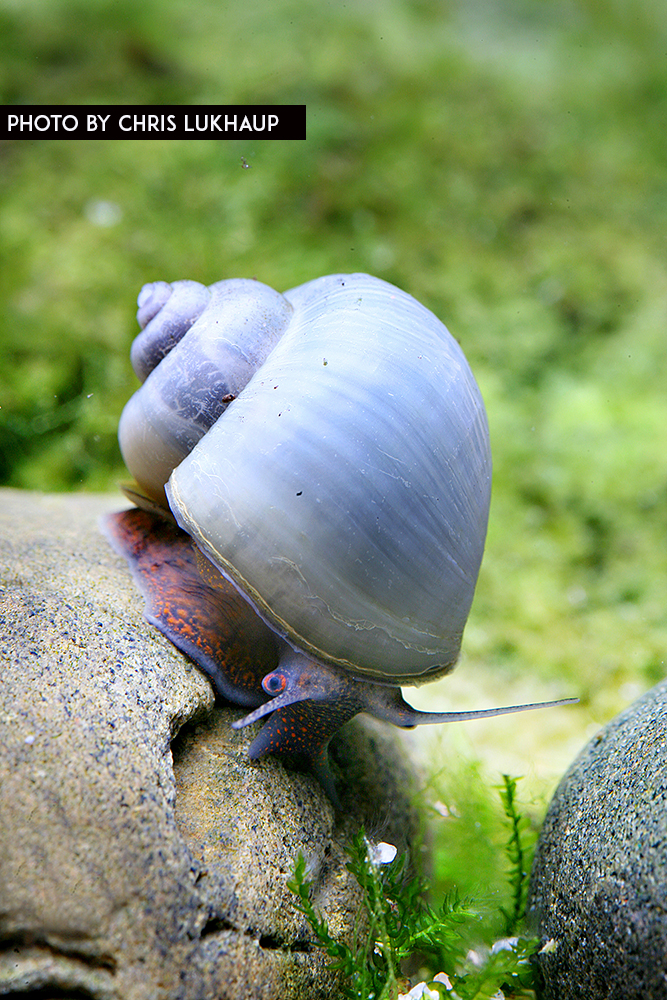
This ranges from pitting to complete destruction of everything green in the aquarium. Even tough plants like Anubias are not spared. You can counteract quite well with vegetable feeding and green food, but eventually you will see the effects in the aquarium. The rule is - the more food, the stronger the reproduction. There are crayfish keepers who take advantage of this and keep, for example, Marisa cornuarietis, the paradise snail, in their crayfish tanks. This way, the pinchers always have live protein food available, and the snail's strong reproduction is somewhat curbed.
Water values & mineral balance
Not only one or more sources of calcium are important for nice enclosures: crushed eggshell, cuttlebone, special calciferous mineral food like the pure MineralCubes, the MineralCubes with spinach or with vegetables and also special snail food ensure that the snails get their needed minerals. However, they do not only absorb minerals through the food, but also extract them from the water through their deficient tissue. Sufficient and regular water changes are therefore vital in apple snail aquariums, since with insufficient fresh water supply the water soon becomes very soft and acidic and can attack the shells.
Basically rather hard water with a GH from 8 and a KH of 6-20 upwards has proven itself, the temperatures should be between 22 and 26 °C, the pH-value should be 7,5 to 8. An aquarium size from 54 liters is recommended, for the smaller species Asolene spixi tanks from 40 l are also possible. The aquariums must have a powerful filter - apple snails have a very active metabolism, need a lot of food and accordingly produce an enormous amount of waste. Definitely not for filterless tanks!
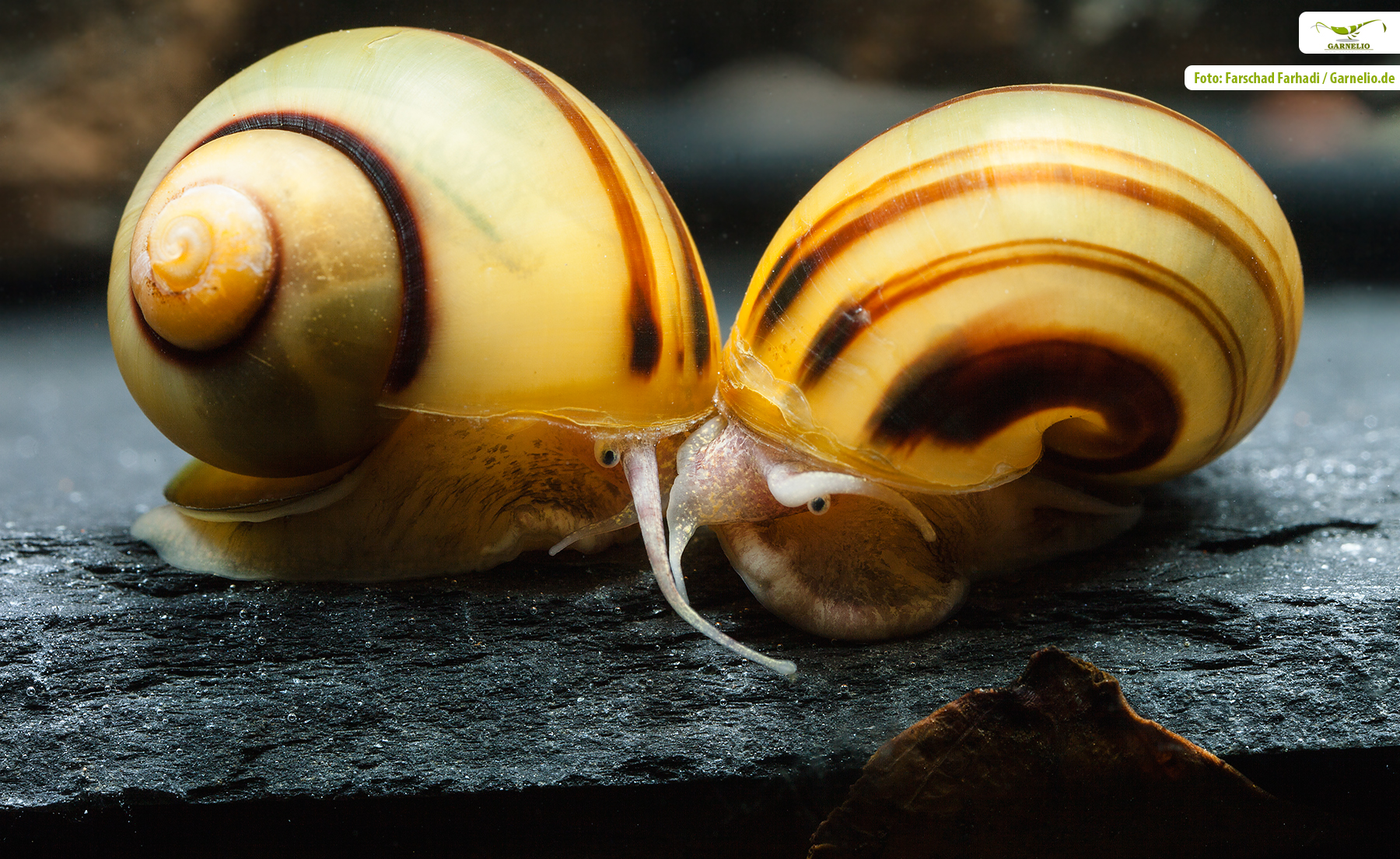
The snorkeling lung breather!
Apple snails are usually found in nature in stagnant waters such as ponds or even marshes. These areas are often low in oxygen in the tropics and may dry out at times. Apple snails have adapted well to these conditions and breathe with the help of gills as well as through a lung. Many species have a long so-called sipho on the left side of their head - a tube of mantle tissue through which they can draw air as if through a snorkel, as long as they themselves can remain safely below the water surface. This protects them from predators - such a protein-rich, large apple snail is on the menu of many animals and also in some regions of humans.
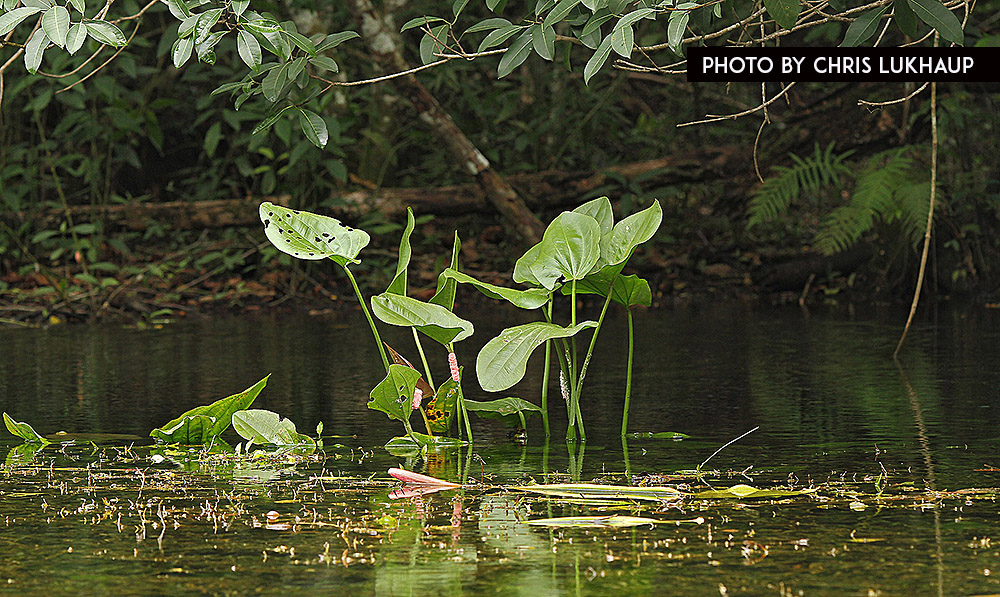
How do apple snails orient themselves?
As with all water snails, the eyes of the apple snail are located at the base of the antennae. They can distinguish light and dark, but otherwise do not see very well. Apple snails therefore orient themselves mainly by their very good sense of smell. The olfactory cells of the apple snails are mainly located in the long, slender antennae, with which they also specifically search for food sources in the water.
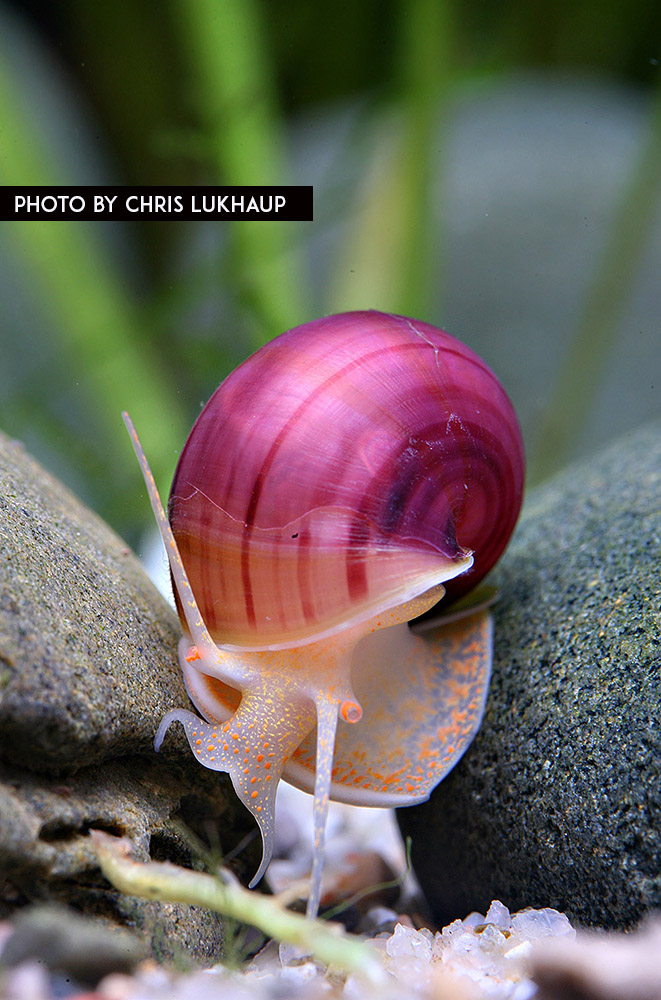
Are apple snails hermaphrodites?
Unlike many aquatic snails, apple snails are separate sexes. Males and females can be distinguished relatively easily. In variants with light-colored shells, the ovaries of females can be seen through the first few coils at the tip of the shell, and the tip looks much darker on them than on males. With thick case walls and with dark case colors this possibility of differentiation is of course omitted. Then it is easiest to distinguish the animals during a mating. The snail sitting on top is the male. While the sipho can be seen to the left of the head in the shell opening, the penis can often be seen to the right in male snails.
After mating, females lay egg cocoons, which are often hard and calcareous. The species can be distinguished from each other quite well by these egg cocoons. The fully developed young hatch after two to four weeks, depending on temperature.
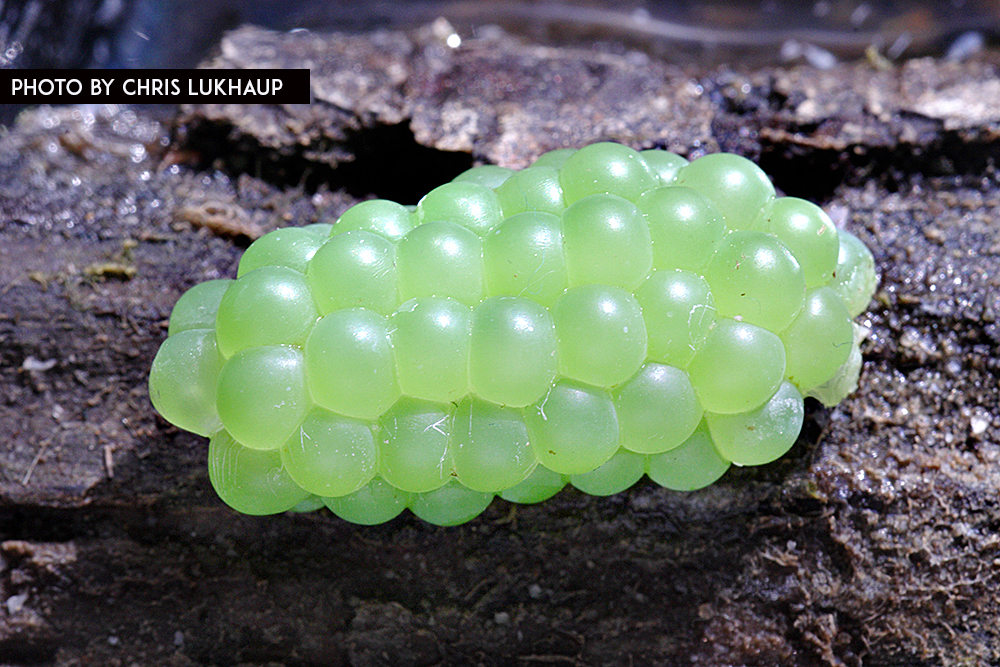
Popular species of apple snail
We will go over the most common species of apple snails distributed in the hobby and also very briefly the apple snails that may no longer be distributed.
Pomacea diffusa, the "classic" apple snail (subject to the ban on propagation) does not eat plants. The hard egg cocoons are light pink and are deposited above the water surface. Possible shell colors: brown, yellow, blue, pink, purple, white, shell height up to 5.5 cm
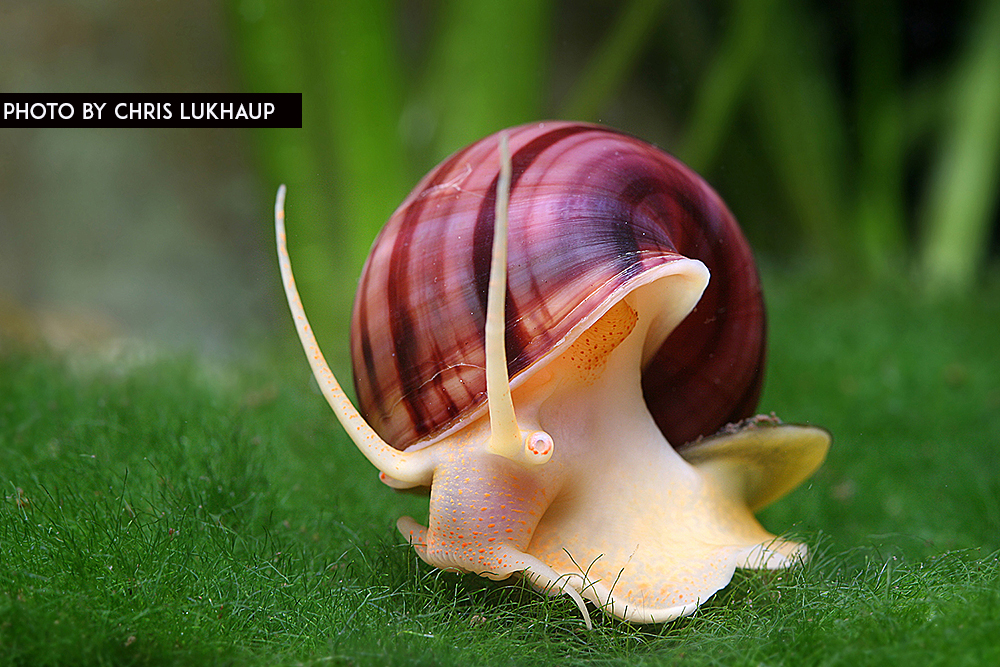
Pomacea canaliculata (subject to distribution ban)
eats plants. The hard egg cocoons are light orange, also Pomacea canaliculata lays its eggs above the water level. Possible shell colors: brown to yellow, shell height up to 7.5 cm
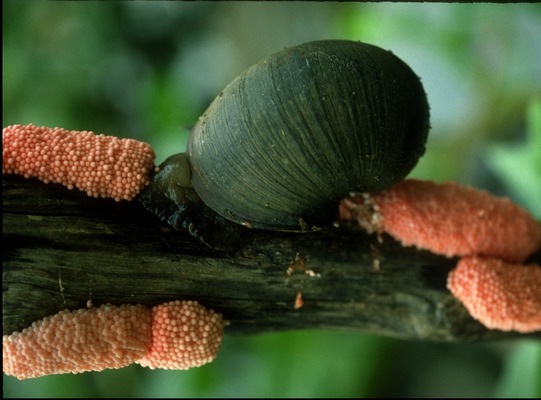
Pomacea haustrum (subject to distribution ban)
eats plants. It also lays its hard green egg cocoons above the water level. Shell color: brown, often with darker spiral stripes. Shell height up to 12 cm
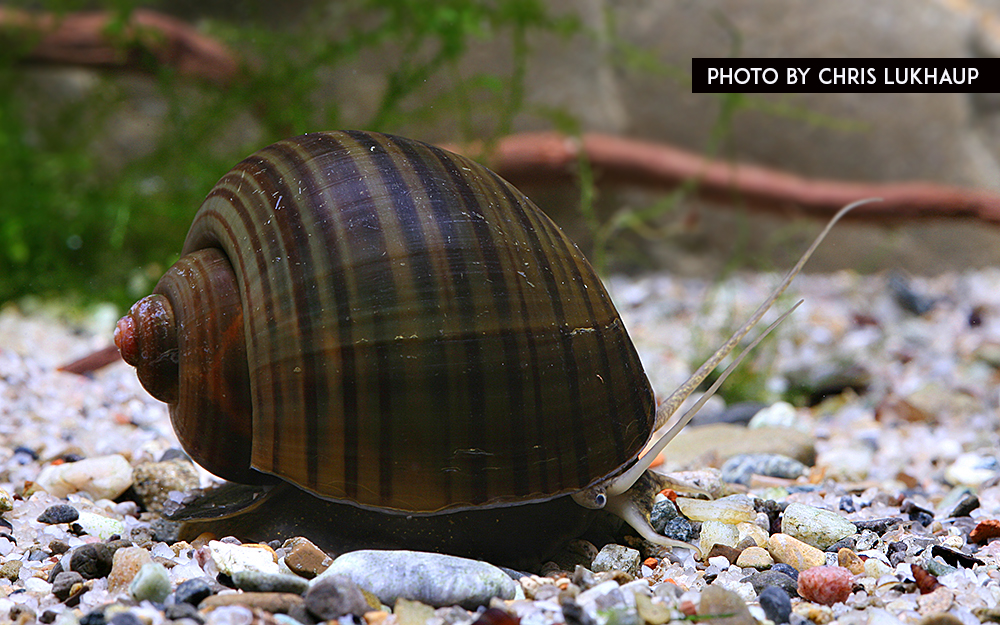
Pomacea insularum (subject to distribution ban)
eats plants (ask Spanish rice farmers ...). Bright pink hard egg cocoons above the water surface. Shell color: brown, often with darker stripes, shell height up to 4.5 cm
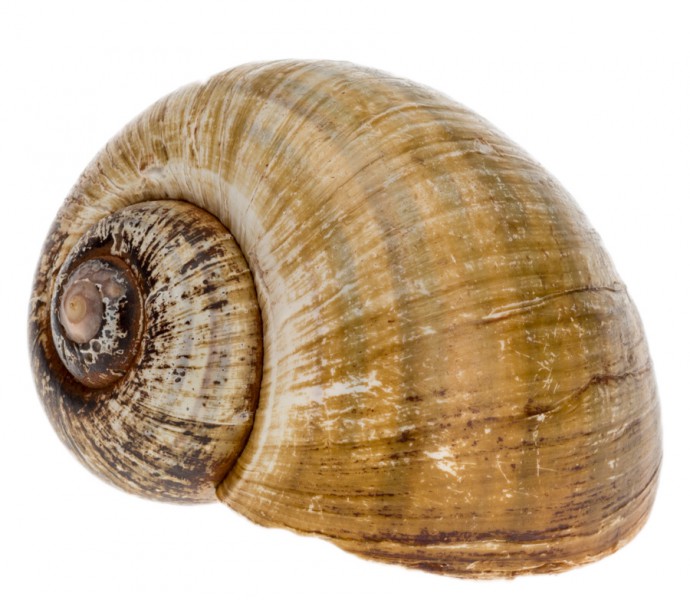
Marisa cornuarietis - Paradise snail (no restrictions)
likes to eat plants very much and reproduces extremely well. It looks like a giant posthorn snail, but still belongs to the apple snails. The loose egg cocoons are laid under water on hard substrate (gladly on wood), the shell is transparent, the eggs are very large. Shell color: cream to light brown, with broad to narrow dark brown spiral stripes, shell diameter: up to 5 cm. There is also a golden yellow variety without stripes.
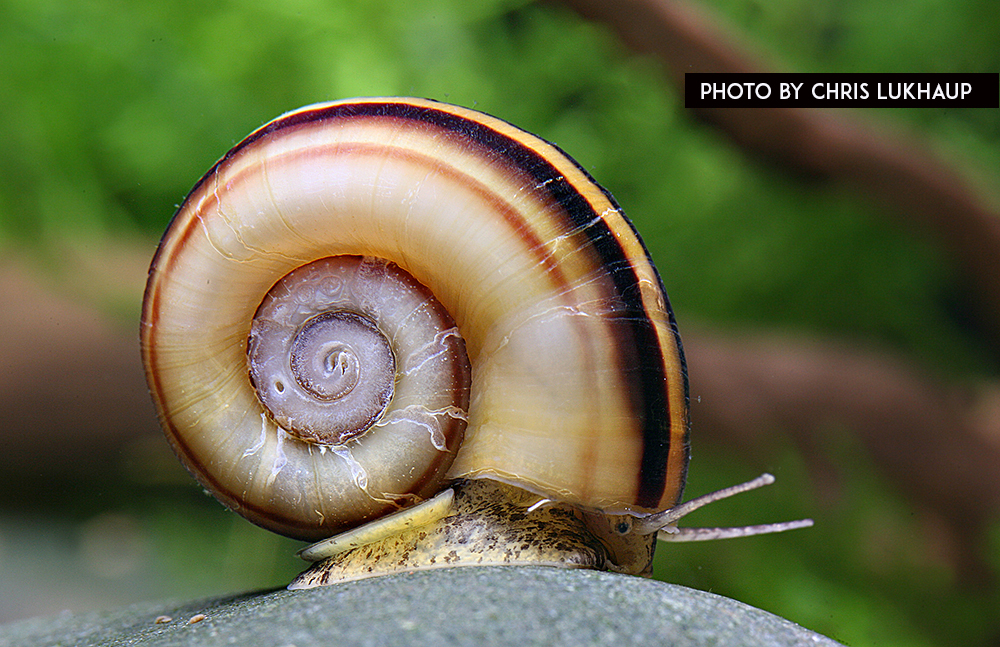
Asolene spixi - Zebra apple snail (No restrictions)
is somewhat more reserved and does not go strongly to plants. Rather nocturnal. The zebra apple snail likes to bury itself. It lays its loose clutches in transparent cocoons under water, gladly in hiding places like coconut caves. Shell color: light brown with dark brown spiral stripes, shell height: up to 4 cm
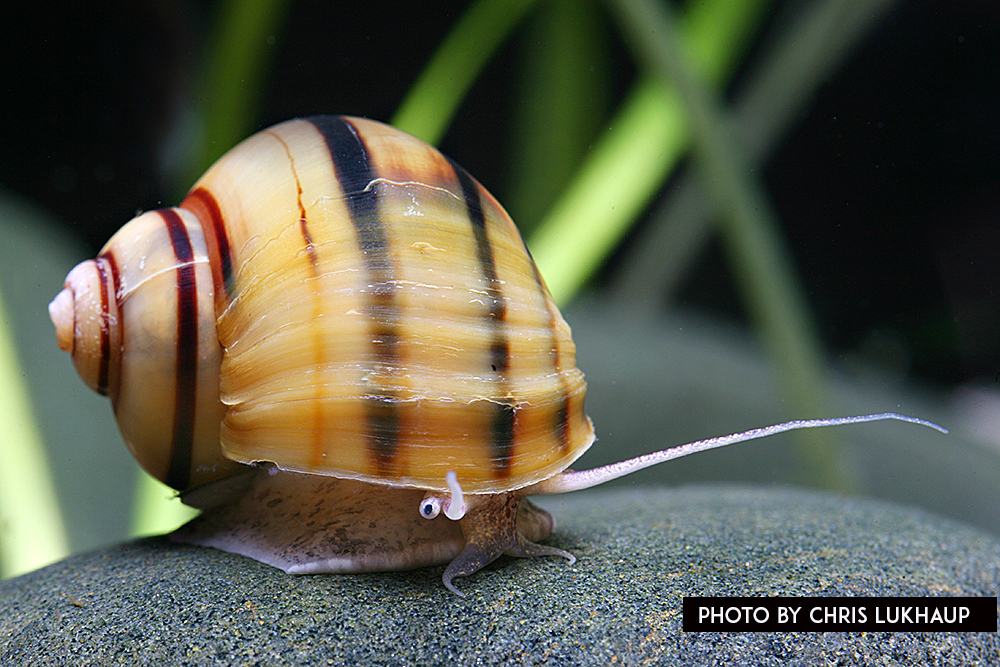
Pila ampullacea (No restrictions)
eats plants and likes to burrow. It deposits its hard white egg cocoons on plant stems above the water. Shell color: reddish brown to dark brown, sometimes with a fine darker spiral stripe. Shell height: up to 10 cm
